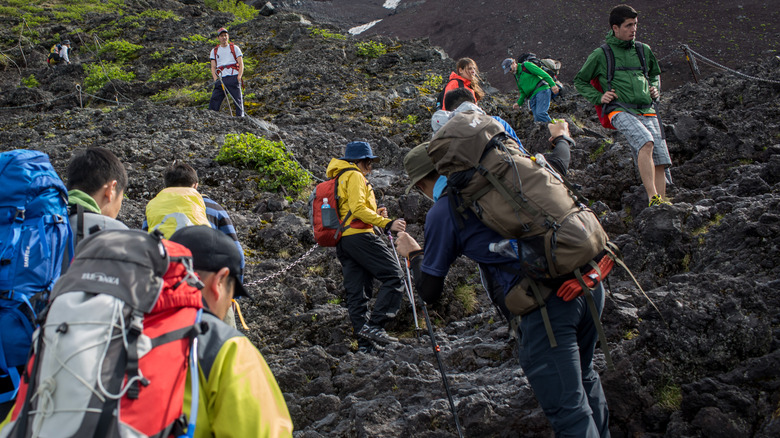Why Climbing Mount Fuji Is Getting Increasingly Impossible – The Disturbing Truth
Each year, approximately 200,000 thrill-seeking individuals attempt to conquer Japan’s iconic Mount Fuji. Despite this,
Scaling Japan’s famous peak is off-limits for the majority of the year.
People continue to swarm to the summit in large numbers. The reason for this is quite clear. Completing the full hike up Mount Fuji provides a profound sense of achievement that you might eagerly share on platforms like Instagram, along with stunning vistas. However, it appears that the Japanese authorities have grown weary of managing so many visitors. Starting in May 2025, they initiated more stringent regulations aimed at reducing congestion. These new rules encompass increased entrance charges, obligatory safety courses, and more restrictive guidelines concerning when individuals may begin their climb.
For those new to the experience, Mount Fuji—the tallest peak in Japan—can be conquered via one of four main trails available during summer months from July to September: Gotemba, Fujinomiya, Subashiri, and Yoshida. Among these, the Yoshida trail remains the most favored choice. Until recently, climbers using just this particular path had to pay a ¥2,000 fee (approximately $14). However, starting now, all trekkers choosing any of these paths must pony up ¥4,000 (around $28) as an entry charge to ascend this iconic summit. Additionally, before embarking on your journey, you’re required to participate in a brief safety course covering basic mountaineering guidelines along with regional customs. Post-session, you’ll have to take a concise quiz proving your comprehension of the material covered. It’s not until passing this exam that permission to start scaling Mount Fuji will be granted.
Assume that’s everything? Think again. There’s also a time constraint involved. If you wish to ascend Mount Fuji, you’ll only have permission to do so within designated hours.
Read more:
The 13 Most Stunning Destinations Globally Marred by Excessive Tourism
The Changes Are In Response To Mount Fuji’s Overtourism And To Bolster Safety

In addition to paying a fee and passing a test, there’s another hoop you have to go through if you want to climb Mt. Fuji — making a reservation. Would-be climbers must book their slot through the official Mt. Fuji website, with separate options depending on whether you’re a day hiker or planning to sleep in a mountain hut. But don’t get too confident — only 4,000 climbers are allowed per day, and given the numbers that Japan’s highest peak attracts, spots fill up fast. Don’t fret, if you want to simply gaze in awe at the mountain, there are
places where you can view it even in the winter
.
Then again, it’s not just about saving your spot. Part of the reservation process includes agreeing to a list of rules. For starters, you’ll need to promise you won’t attempt “bullet climbing,” the dangerous stunt where people try to summit the peak overnight without resting. You’ll also need to swear you’ll wear proper gear: rain gear with separate top and bottom layers, proper footwear, and weather-appropriate clothing, which climbers may tend to forget, especially
Those who are new to hiking
. Natsuko Sodeyama, an official from the Shizuoka Prefecture, shares the information
Japan Times
There isn’t another mountain in Japan that draws such a large number of visitors within just over two months. Therefore, certain limitations are essential to guarantee their safety.
Apart from safety concerns, the more stringent regulations serve as an immediate approach to tackle the escalating issue of overtourism. Mount Fuji, designated as a UNESCO World Heritage site, has faced criticism due to its deteriorating state, with some people referring to it sarcastically as “Trash Mountain.”
CNN
Thus, the new regulations and charges may seem bothersome, yet they represent the minimum effort required to prevent this legendary summit from crumbling beneath our feet.
Eager to uncover additional secret treasures and get insider travel advice?
Sign up for our complimentary e-newsletter.
to unlock the globe’s most hidden travel treasures.
Read the
original article on Islands
.